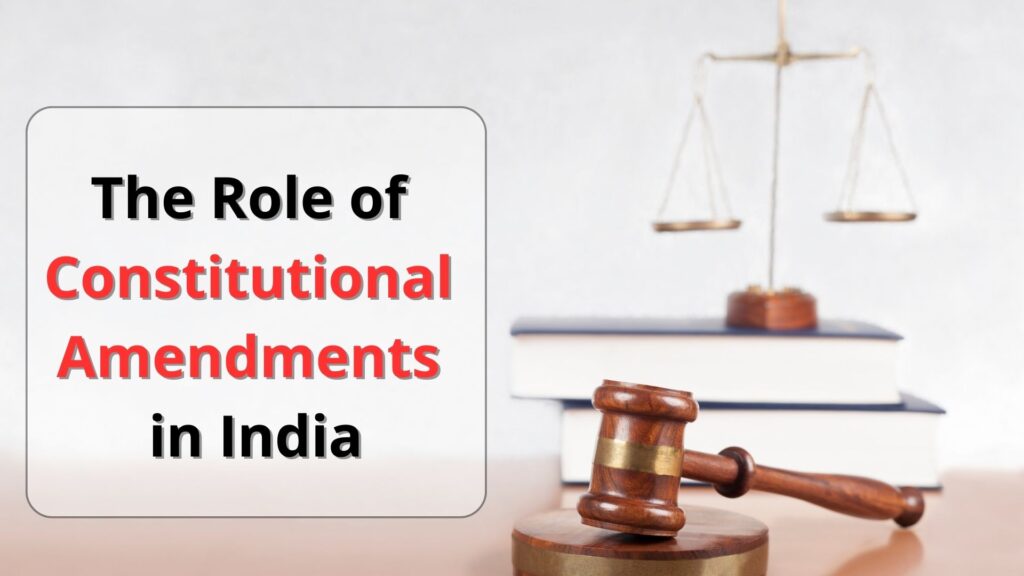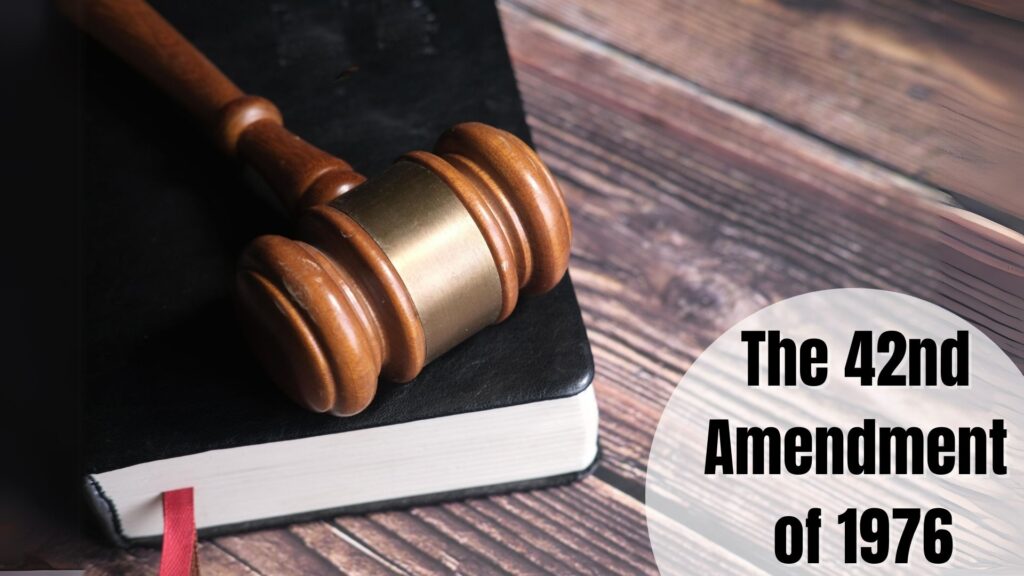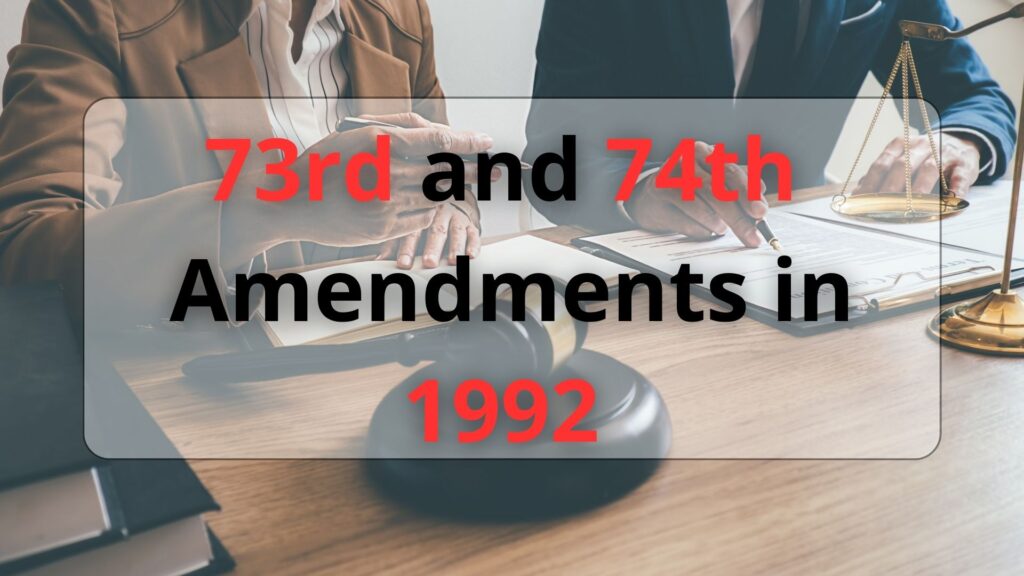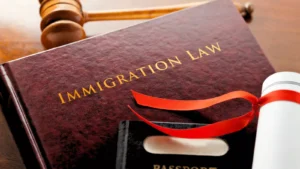The history of constitutional amendments in India is a topic where BA LLB students can excel. With a background in humanities, they are better equipped to study the evolution of the Indian constitution as a response to the changes in Indian society – and in turn, study the impact of the law on the society.
We all know that India has one of the longest and most comprehensive constitutions in the world – one that adapts itself to the socio-economic changes in India and beyond. In this article, we will discuss the history of constitutional amendments and the relevance of BA LLB course to dig deeper into them and understand how they help in the ongoing pursuit of justice in our country.
The Role of Constitutional Amendments in India

Constitutional amendments are a vital cog in the machinery of any democracy. They allow us to fine-tune the Constitution – to adapt it to contemporary realities. Indian Constitution, though meticulously crafted, was designed for flexibility and growth. Dr. B.R. Ambedkar, who was the Head of the Committee that drafted the original Indian Constitution, knew that the evolution of the Indian Constitution is a must-have feature if it has to stay relevant in an ever-changing society.
Hence, under Article 368, the Indian Constitution empowered Parliament to amend its provisions – with certain amendments requiring special procedures. These changes can address a wide range of issues, from social justice and fundamental rights to federal relations and economic policies.
We will discuss some of the most discussed constitutional amendments of India here along with their history to understand how they came about in response to India’s socio-political challenges and aspirations.
Most Discussed Constitutional Amendments in India
- The First Amendment (1951): Balancing Free Speech and Social Justice
A year after the Constitution was enacted, in 1951, Prime Minister Jawaharlal Nehru introduced the First Amendment to tackle two pressing issues:
- land reform, and
- the regulation of free speech.
It added restrictions to Article 19 (which guarantees the right to free speech) to protect public order, decency, and morality.
The history of constitutional amendments says that at the time, several courts had struck down land reform laws aimed at redistributing land to address social inequalities as ‘unconstitutional’. Hence, the First Amendment introduced Articles 31A and 31B safeguarding land reform laws from judicial review.
- The 42nd Amendment (1976): A Radical Shift During the Emergency

Who can forget the year 1976 – a turbulent period in India’s history of constitutional amendments? Passed during the Emergency, under Prime Minister Indira Gandhi, the 42nd Amendment was often called the ‘mini-Constitution’. It made sweeping changes – expanding the powers of the central government while curtailing judicial review.
Key changes in the Indian Consitution included:
- Adding the words ‘socialist’ and ‘secular to the Preamble reflecting the ideological leanings of the time,
- Strengthening the Directive Principles of State Policy over Fundamental Rights that changed the balance of power between the individual and the state in the favour of the latter,
- Reducing the power of the judiciary by making constitutional amendments beyond judicial review (which many believe weakened the checks and balances essential in a democracy).
Many people criticised this amendment as an attempt to give more power to the Central Government, diminish the role of democratic institutions, and overall, the black period in the evolution of the Indian Constitution.
In 1978, the 44th Amendment reversed many of these changes – restoring judicial review, and ensuring that Fundamental Rights remained a cornerstone of the Indian legal framework.
- The 61st Amendment (1989): Lowering the Voting Age
The 61st Amendment in 1989 was a significant step in expanding the democratic participation of the youth in the Indian political system as it lowered the voting age from 21 to 18 years.
When we study the evolution of the Indian constitution, this amendment is seen as the growing recognition of youth as a powerful demographic which in turn was a reflection of the changing demographics and aspirations of the nation.
- The 73rd and 74th Amendments (1992): Strengthening Local Governance

India’s federal structure requires a delicate balance of power between the central government, state governments, and local authorities. The 73rd and 74th Amendments, passed in 1992, were landmark reforms aimed at strengthening local self-governance.
Empowering Panchayats and Municipalities, this amendment promoted decentralisation of power and participatory democracy at the grassroots level. They play a crucial role in the history of constitutional amendments in India as they directly addressed the challenges of rural and urban development and promoted inclusive growth across the country.
- The 101st Amendment (2016): The Introduction of GST
When it comes to economic reforms, the 101st Amendment stands out as it introduced the Goods and Services Tax (GST) – a uniform tax regime that replaced a complex web of state and central taxes.
The aim of introducing GST was to:
- create a single market across India,
- simplify the taxation system,
- boost economic efficiency, and
- foster greater cooperation between the central and state governments in matters of taxation.
- The 103rd Amendment (2019): Economic Reservation
More recently, the 103rd Amendment introduced a 10% reservation in government jobs and educational institutions for the economically weaker sections (EWS) of the society. While it sparked debates about the nature of social justice and equality in contemporary India, it stands as a significant milestone in the evolution of the Indian Constitution where ‘economic disadvantage’ is considered as the new criterion for reservations.
This amendment was a response to demands for affirmative action that considered economic hardship rather than caste-based differences.
Conclusion: The Evolving Nature of the Indian Constitution
The relevance of the BA LLB course manifests here at its best as the students of the program are better equipped to understand the dynamic interplay between law and society in such cases.
By viewing constitutional amendments through the lens of history, we see how they have shaped India’s trajectory. Whether addressing social justice, democratic participation, local governance, or economic reform, these amendments reflect India’s journey toward becoming a more inclusive, equitable, and dynamic democracy.
As India continues to evolve, the Constitution will remain a guiding force, adapting to new challenges. Though the process of constitutional amendments is complex, it makes the Indian democracy flexible and resilient. BA LLB students are fully-equipped to analyse, interpret, and critique these changes and to understand their impact on society. This is where you can make a difference!
Read more: All Final Year Law Students Can Now Appear For AIBE 2024
Are Speed Reading Skills In Lawyers A Rare Trait?





